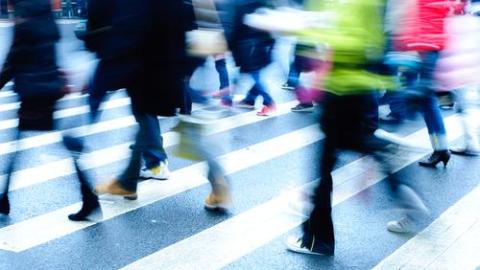Predicting Crowd Behavior to Improve Cities

What’s the Latest Development?
By studying how pedestrians behave in crowds, European scientists are learning surprising things about human behavior. Westerners, for example, will usually step to the right to avoid an oncoming pedestrian. Individuals in Asia, however, tend to step to the left. Another tendency scientists have noticed is that clusters of three and four people naturally organize themselves into concave ‘V’ and ‘U’ shapes, with middle members falling back slightly. The formation makes it easier for individuals to talk with each other.
What’s the Big Idea?
Understanding more about crowd behavior could directly benefit how our cities function. More efficient traffic lights, for example, could be developed by understanding how individuals and vehicles flow naturally through an intersection (rather than waiting for a red light to change when nobody is around). Emergency procedures could also be improved upon by modeling how crowds react to stressful situations, such as a fire evacuation. Researchers also hope large events, like the Olympics, can be better organized using their data.
Photo credit: shutterstock.com




